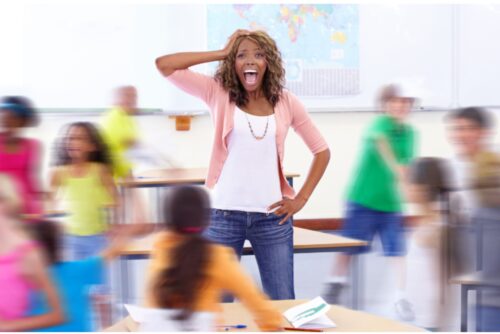Educators and school professionals this free webinar is for you!
Did you used to believe that being a teacher would be easy and that you’d get lots of time off? 🤣 Working in schools has become even more challenging. Daily stressors, big and small, impact your nervous systems. It’s easy to lose yourself in these moments. When this happens, you carry this heightened state to your next interaction, compounding the stress. By the end of the day, you’re exhausted, and your nervous system is ready to explode or shut down! Then, couple this with our expectations versus the realities of working in schools, and we have the perfect storm fostering feelings of overwhelm, helplessness, and frustration. Explore these and other dynamics impacting your daily functioning and behaviors. Walk away with an understanding that will move you from reacting in the moment, to responding in ways that support your well-being, so you can reclaim our inspiration for teaching.-
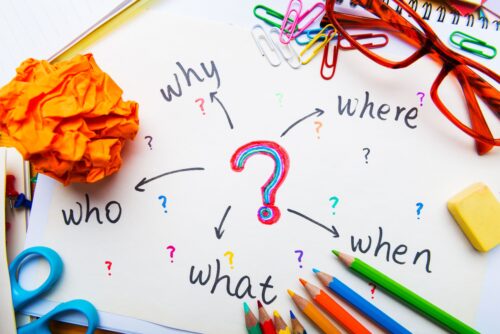 This Free Webinar was recorded on May 10th, 2023 and is for all professionals working with students! As professionals working with students, it's been a long year. Many of us have spent much of it trying to make sense of students' behaviors Maybe even feeling helpless, or angry, not knowing exactly what to do next. We understand your dilemma and don't want you to spend the summer and next year, asking the same questions. Register for this free webinar to explore how behaviors, even those we don't love, can provide a roadmap explaining what's going on AND what we can do about it. If you're asking, “but what if the behavior is disrupting learning for other students?” Great question! We’ll chat about that too. Scroll below for details.
This Free Webinar was recorded on May 10th, 2023 and is for all professionals working with students! As professionals working with students, it's been a long year. Many of us have spent much of it trying to make sense of students' behaviors Maybe even feeling helpless, or angry, not knowing exactly what to do next. We understand your dilemma and don't want you to spend the summer and next year, asking the same questions. Register for this free webinar to explore how behaviors, even those we don't love, can provide a roadmap explaining what's going on AND what we can do about it. If you're asking, “but what if the behavior is disrupting learning for other students?” Great question! We’ll chat about that too. Scroll below for details. -
 This Free Webinar was recorded on August 10th, 2022 and is for educators or anyone that works in schools. Stress and anxiety are impacting everyone, making teaching and learning very challenging. To support a healthy learning environment for all of us, we must address our own stress and anxiety first. None of us can be effective when our brains and bodies are overwhelmed. Neuroscience can help us understand what is happening in moments of dysregulation. More importantly, it can guide us in moving through the stress and keeping ourselves healthy. Why does this matter? When we make choices instead of simply reacting, we decrease the likelihood of behaviors escalating for both us and our students! Scroll below for details.
This Free Webinar was recorded on August 10th, 2022 and is for educators or anyone that works in schools. Stress and anxiety are impacting everyone, making teaching and learning very challenging. To support a healthy learning environment for all of us, we must address our own stress and anxiety first. None of us can be effective when our brains and bodies are overwhelmed. Neuroscience can help us understand what is happening in moments of dysregulation. More importantly, it can guide us in moving through the stress and keeping ourselves healthy. Why does this matter? When we make choices instead of simply reacting, we decrease the likelihood of behaviors escalating for both us and our students! Scroll below for details. -
 Keep the momentum going and continue growing and learning! Nurture the bonds you've built, with our 6-month group consultation journey designed for those who’ve completed one of our signature SEI programs. It’s a chance to deepen your learning, stay inspired, and grow together with our vibrant global community. Join Judy for six 1-hour group consultation sessions. This is your space to pause, reflect, and recharge. A place to reconnect with the heart of our work and the people who make it meaningful. Whether you're navigating challenges or celebrating wins, we want to walk alongside you. Use the dropdown menu to choose the group that fits your schedule the best. For dates and times, refer to the details below.
Keep the momentum going and continue growing and learning! Nurture the bonds you've built, with our 6-month group consultation journey designed for those who’ve completed one of our signature SEI programs. It’s a chance to deepen your learning, stay inspired, and grow together with our vibrant global community. Join Judy for six 1-hour group consultation sessions. This is your space to pause, reflect, and recharge. A place to reconnect with the heart of our work and the people who make it meaningful. Whether you're navigating challenges or celebrating wins, we want to walk alongside you. Use the dropdown menu to choose the group that fits your schedule the best. For dates and times, refer to the details below. -
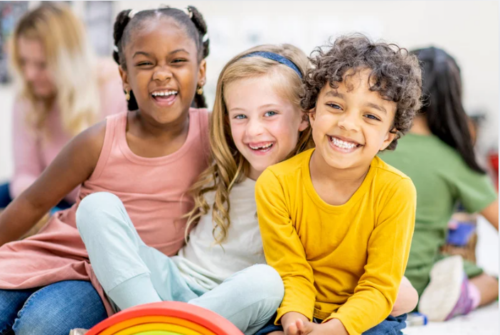 This 21-hour program dives deeply into understanding the context in which learning and growth take place. Neuroscience can help us understand what is happening in moments of dysregulation, so we can learn how to support regulation for children and classrooms and create regulatory environments. You’ll learn to use brain and body state awareness to guide you in applying strategies and learn how to talk to others about the science behind the strategies you’re using. Utilizing a developmental approach, we’ll focus on supporting both educators and children, as we explore what it means to become an external regulator. Navigating the complexities of our interactions will allow us to shift even the most challenging dynamics. Welcome, we are excited to share this journey with you.
This 21-hour program dives deeply into understanding the context in which learning and growth take place. Neuroscience can help us understand what is happening in moments of dysregulation, so we can learn how to support regulation for children and classrooms and create regulatory environments. You’ll learn to use brain and body state awareness to guide you in applying strategies and learn how to talk to others about the science behind the strategies you’re using. Utilizing a developmental approach, we’ll focus on supporting both educators and children, as we explore what it means to become an external regulator. Navigating the complexities of our interactions will allow us to shift even the most challenging dynamics. Welcome, we are excited to share this journey with you. -
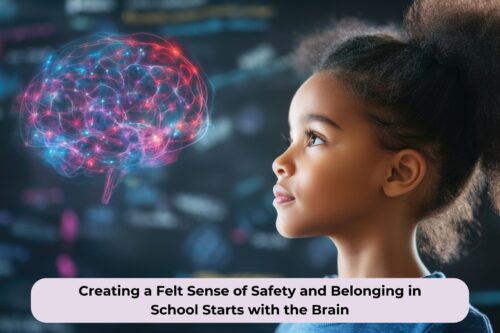 Safety and belonging start with the brain! Creating a safe and welcoming environment is the foundation of classroom culture and community and is crucial for academic success and overall well-being. We spend so much time creating beautiful classrooms, however, providing students with a sense of security can be challenging if we don't understand how the brain perceives safety and threats. You cannot talk someone into feeling safe. Learn to use approaches that foster a sense of safety, nurture trust and belonging, and support students in approaching challenges with curiosity instead of fear as they learn that they can manage to do things that are difficult.
Safety and belonging start with the brain! Creating a safe and welcoming environment is the foundation of classroom culture and community and is crucial for academic success and overall well-being. We spend so much time creating beautiful classrooms, however, providing students with a sense of security can be challenging if we don't understand how the brain perceives safety and threats. You cannot talk someone into feeling safe. Learn to use approaches that foster a sense of safety, nurture trust and belonging, and support students in approaching challenges with curiosity instead of fear as they learn that they can manage to do things that are difficult. -
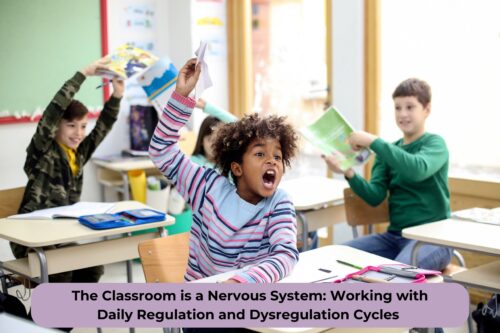 Discover the true importance of regulation and how it's often misunderstood. Don't let regulation be just another buzzword in your vocabulary. Join Judy to explore how regulation and dysregulation cycles affect students and adults throughout the day. Learn how finding moments of regulation in the midst of dysregulation can be a powerful tool in improving your well-being and shifting students’ behaviors. By gaining a deeper understanding of how dysregulation is a natural part of everyday life, we can recognize important clues for supporting students in becoming aware of their own activation and learning effective strategies through challenging moments. Apply this understanding to class-wide activation. Viewing the class as a collective nervous system gives you the ability to support entire groups of students at the same time, without burning out your own nervous system. Empower yourself and your students!
Discover the true importance of regulation and how it's often misunderstood. Don't let regulation be just another buzzword in your vocabulary. Join Judy to explore how regulation and dysregulation cycles affect students and adults throughout the day. Learn how finding moments of regulation in the midst of dysregulation can be a powerful tool in improving your well-being and shifting students’ behaviors. By gaining a deeper understanding of how dysregulation is a natural part of everyday life, we can recognize important clues for supporting students in becoming aware of their own activation and learning effective strategies through challenging moments. Apply this understanding to class-wide activation. Viewing the class as a collective nervous system gives you the ability to support entire groups of students at the same time, without burning out your own nervous system. Empower yourself and your students! -
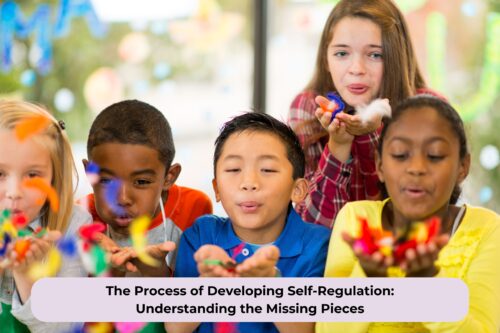 It can be frustrating when we teach students certain skills, and they don't seem to use them. This is especially true when it comes to behavior, and it's easy to assume that students are intentionally being defiant. However, what if we told you that much of the social-emotional learning programming and teaching lacks important components? These missing pieces make it difficult for students to use strategies independently. The good news is that we can incorporate these vital elements by making only small shifts to daily routines! Learn a framework for using whole-brain approaches that includes teaching specific skills and developing capacities that result in students being able to determine and apply strategies that work for them. We can provide students with the tools they need to succeed both academically and socially, by scaffolding the development of the skills they need to take responsibility for their own behaviors.
It can be frustrating when we teach students certain skills, and they don't seem to use them. This is especially true when it comes to behavior, and it's easy to assume that students are intentionally being defiant. However, what if we told you that much of the social-emotional learning programming and teaching lacks important components? These missing pieces make it difficult for students to use strategies independently. The good news is that we can incorporate these vital elements by making only small shifts to daily routines! Learn a framework for using whole-brain approaches that includes teaching specific skills and developing capacities that result in students being able to determine and apply strategies that work for them. We can provide students with the tools they need to succeed both academically and socially, by scaffolding the development of the skills they need to take responsibility for their own behaviors. -
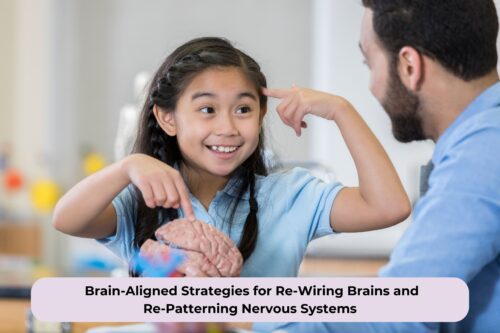 When strategies that have always worked in the past, are not working, it’s frustrating! In fact, sometimes our responses even seem to make the situation worse. What’s going on? When we learn to identify brain and body states it facilitates using the right strategy at the right time, including understanding why something might work in one moment and not another. When students aren’t in the higher regions of their brains, some strategies meant to support them, actually create escalation. Learn critical classroom strategies that work with students during varying states of arousal, expanding windows of tolerance and getting students back to places of learning. Strengthen your ability to help students grow their capacity for dealing with stress and challenges in and out of the classroom as you support creating new options for behavior.
When strategies that have always worked in the past, are not working, it’s frustrating! In fact, sometimes our responses even seem to make the situation worse. What’s going on? When we learn to identify brain and body states it facilitates using the right strategy at the right time, including understanding why something might work in one moment and not another. When students aren’t in the higher regions of their brains, some strategies meant to support them, actually create escalation. Learn critical classroom strategies that work with students during varying states of arousal, expanding windows of tolerance and getting students back to places of learning. Strengthen your ability to help students grow their capacity for dealing with stress and challenges in and out of the classroom as you support creating new options for behavior. -
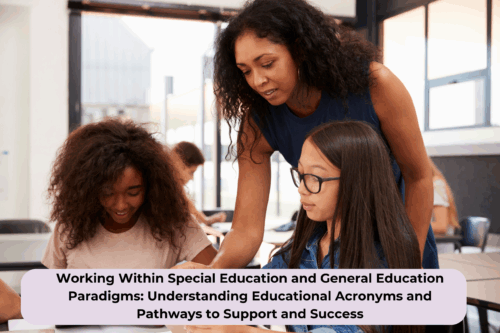 It is time to integrate the valuable insights and trauma-informed, community responsive approaches with the laws and mandates governing behavioral health. First, we will clarify the alphabet soup of educational acronyms as we examine the hierarchy of laws and rights that guide our work in implementing behavioral health in education while ensuring compliance with special education regulations. Next, we will discuss the importance of federal rights and how they are applied specifically in the state of Colorado, including a comparison of Individualized Education Programs (IEPs) and Section 504 plans to highlight educators' responsibilities in each case. We will also explore pathways to support and success by learning about the Child Find process, with a focus on the obligations of educators. Additionally, we will explore the intersection of Multi-Tiered Systems of Support (MTSS) and special education identification, as well as some criteria that determine a student’s eligibility for special education services. Join us to learn how to stay compliant without losing the heart of education!
It is time to integrate the valuable insights and trauma-informed, community responsive approaches with the laws and mandates governing behavioral health. First, we will clarify the alphabet soup of educational acronyms as we examine the hierarchy of laws and rights that guide our work in implementing behavioral health in education while ensuring compliance with special education regulations. Next, we will discuss the importance of federal rights and how they are applied specifically in the state of Colorado, including a comparison of Individualized Education Programs (IEPs) and Section 504 plans to highlight educators' responsibilities in each case. We will also explore pathways to support and success by learning about the Child Find process, with a focus on the obligations of educators. Additionally, we will explore the intersection of Multi-Tiered Systems of Support (MTSS) and special education identification, as well as some criteria that determine a student’s eligibility for special education services. Join us to learn how to stay compliant without losing the heart of education! -
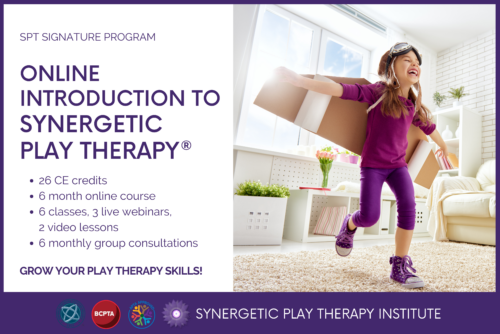
LEARN A SOLID PLAY THERAPY THEORY THAT COMBINES THE POWER OF PLAY WITH INTERPERSONAL NEUROBIOLOGY!
**For program details and dates of when this program is offered, please visit the Synergetic Play Therapy Institute's website**
CLICK HERE FOR MORE PROGRAM DETAILS!!
Have you been searching for ways to create a deeper impact for your clients? Or perhaps you are wanting to improve or learn more about ...- Becoming an external regulator to support children with integration and repatterning the activation of their nervous system.
- Supporting healing at deeper levels through right brain to right brain attuned communication.
- Teaching children interoceptive (body) awareness (...the key ingredient for self-regulation and co-regulation).
- Creating a neuroception of safety for a child when emotional flooding happens.
- Setting boundaries with the brain in mind to not minimize, shame or shut down the child's play, but keep them engaged in their therapy process.
- Building collaborative relationships with caregivers to support their child's therapeutic process.
- Developing goals, tracking a child's therapeutic process, and translating what's happening during the child's therapy session to their caregiver(s) and others in the world.
- Helping children develop a secure attachment to themselves (...a foundation of resilience).
- Applying SPT concepts from a cultural lens for a more inclusive and culturally sensitive clinical orientation where a client's unique experiences and needs are honored.
- How to feel a little more like YOU in the therapy process (...because we know inauthenticity is the fastest way to burnout and compassion fatigue).
Come discover what showing up in the playroom truly means and explore what is happening in the play therapy process, how change occurs, and ultimately what it takes to help children heal at profound levels. And the best part is, you get to be you on the journey!
Check out what past students had to say about their experiences in the course!
"SPT is the missing piece in play therapy. I gained an understanding of who I am in the playroom - a humanness that wasn't there before." -Frances Donohue
Join the growing number of mental health professionals, those in related roles (Child Life Specialists, School Counselors, Occupational Therapists, Coaches, etc.) and parents/caregivers who are learning SPT!
*For program details and objectives, see below.
-
 Join us for this exciting program in which we will be exploring ways to support students and educators. You’ll learn strategies for use in educational settings that promote trauma-informed, social-emotional support. You’ll learn the neuroscience behind these strategies, as you focus on teaming and working together to support your community. Click here for instructions on how to register.
Join us for this exciting program in which we will be exploring ways to support students and educators. You’ll learn strategies for use in educational settings that promote trauma-informed, social-emotional support. You’ll learn the neuroscience behind these strategies, as you focus on teaming and working together to support your community. Click here for instructions on how to register.


